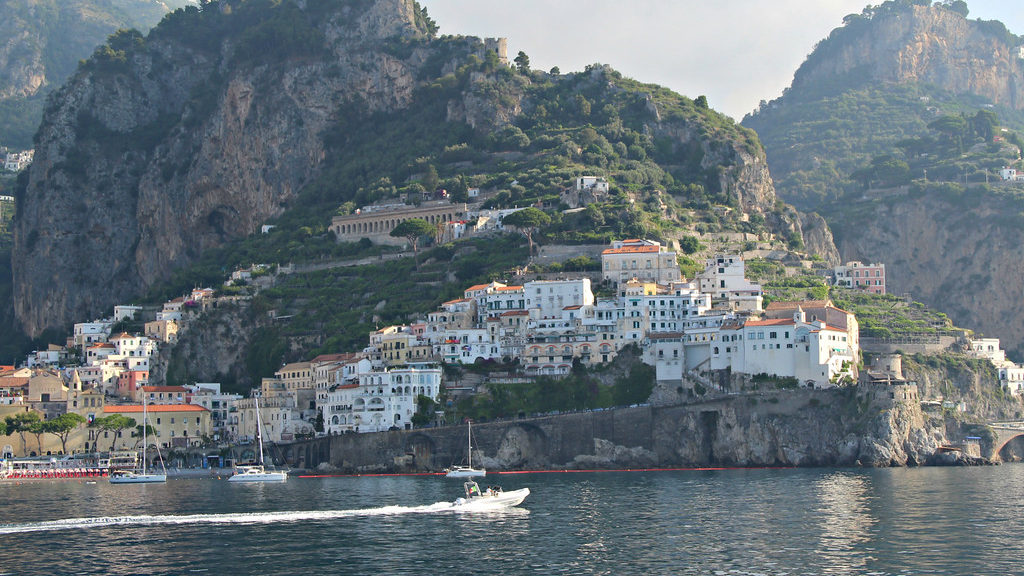
The Amalfi Coast
After we left Herculaneum we drove to Naples where we boarded the Le Ponant. It is a French ship and has three masts which can be used with the engine when there is wind. We were two of the 53 passengers on board. The cabins were small but efficient. The pictures below were taken as we left Naples and of the sunset our first night on board.
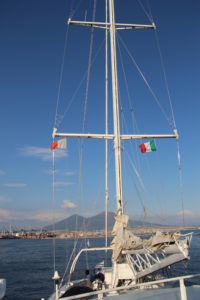

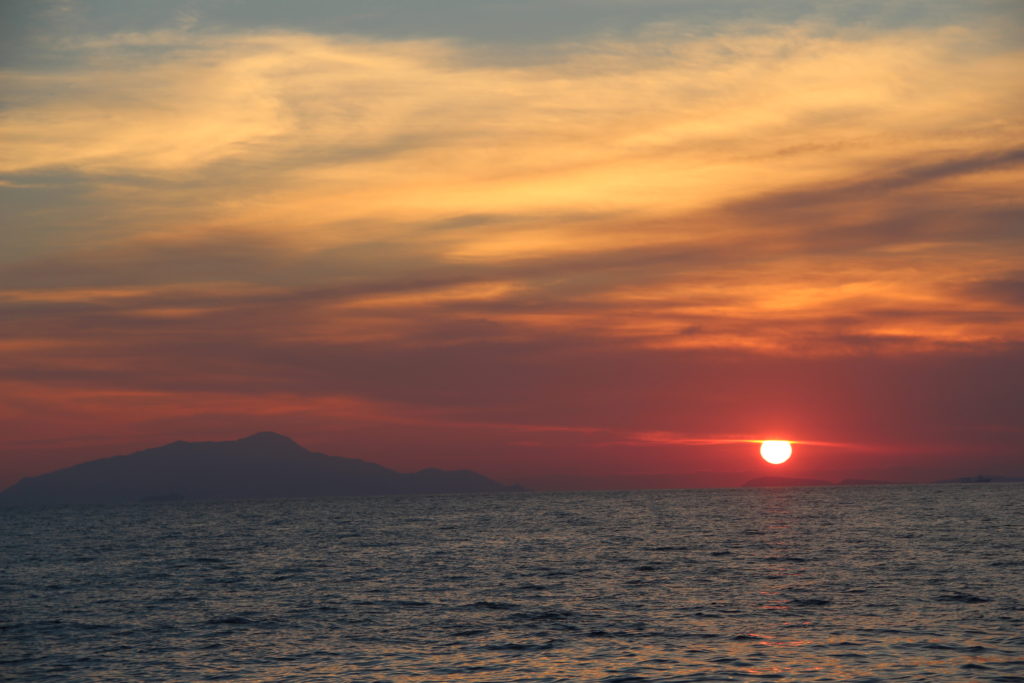
The next morning we were anchored off the Amalfi coast and went ashore via zodiacs. Once there, we boarded a bus and headed for Positano. It is a beautiful town built on cliffs near the sea. I found the story below explaining how Positano got its name.
In ancient times, a Turkish boat became beached just off the shores of what has since come to be known as Positano. Aboard the ship there was a painting of the Virgin Mary. The captain heard the painting whisper “posa, posa” (‘set me down, set me down’) and, obediently, threw the image into the sea. Miraculously, the ship floated. The locals built a Church on the spot where the painting washed ashore, interpreting the episode as a sign that the Virgin had chosen their town as resting place.
Positano may have first been settled in the 9th Century. It was attacked by Pisa in the 1200’s and then strengthened its defenses which included narrow roads and watchtowers. Later, Positano became more of a small fishing village. In the 19th Century, Positano attracted tourists – many who were rich and famous, choosing the town as their vacation home. Spiaggia Grande is one of its beautiful beaches.
When we arrived in Positano, we wandered one of the pedestrian-only streets which was full of all kinds of shops. We made our way to the beach where we enjoyed lunch. The first picture below is one of Amalfi I took from our ship and then one of the zodiacs that took us ashore. Following the picture of the zodiac, there are pictures taken while we traveled to Positano. The first was taken in Furore, a small village between Amalfi and Positano. The picture is of an old fishing village – there are boats on a dry stream bed and a few houses built into the hill. There is also a picture of the bell tower of Santa Maria Assunta, a Catholic church in Positano. Finally there is a view of Positano showing how it was built into the cliffs and a picture of the beach where we enjoyed our lunch.
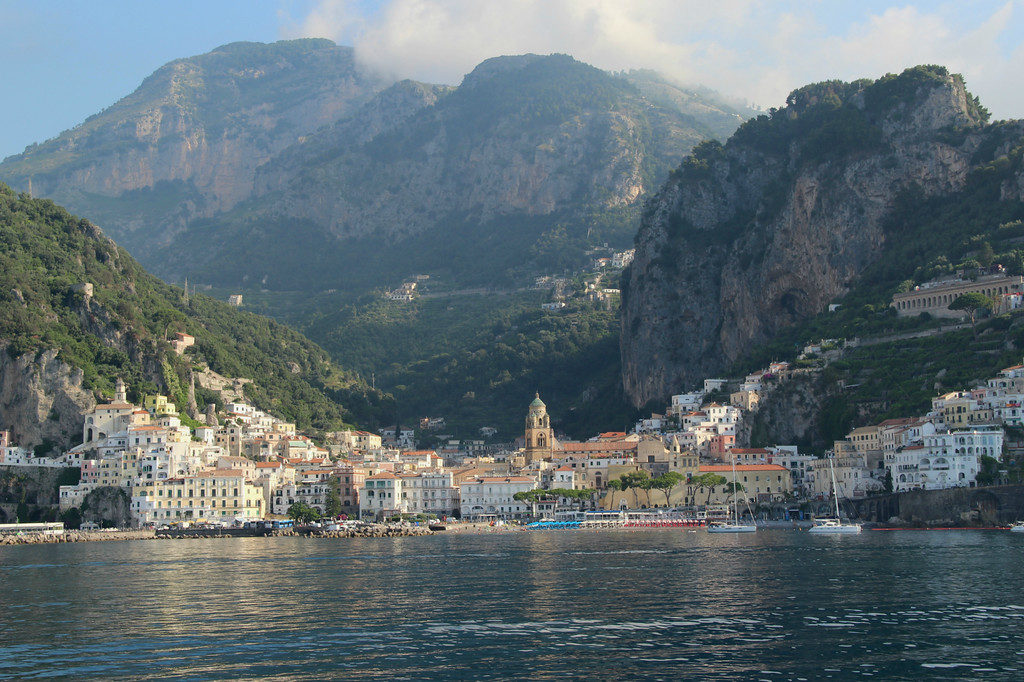
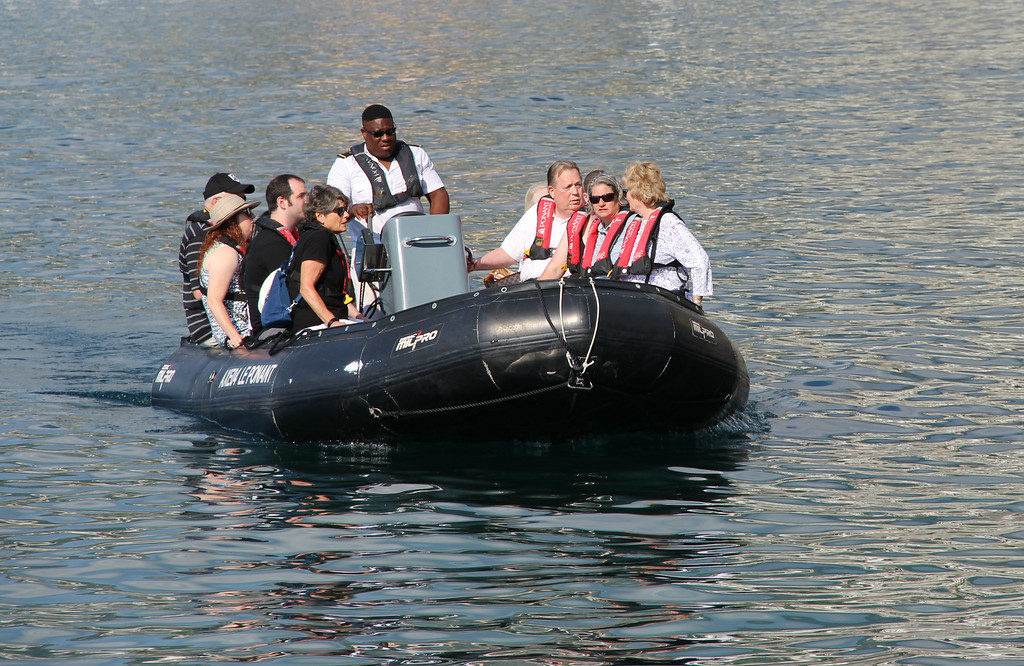
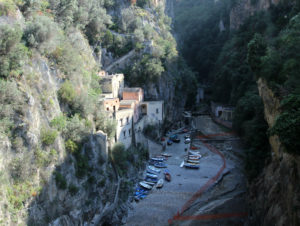
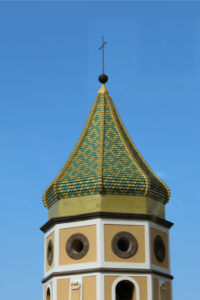
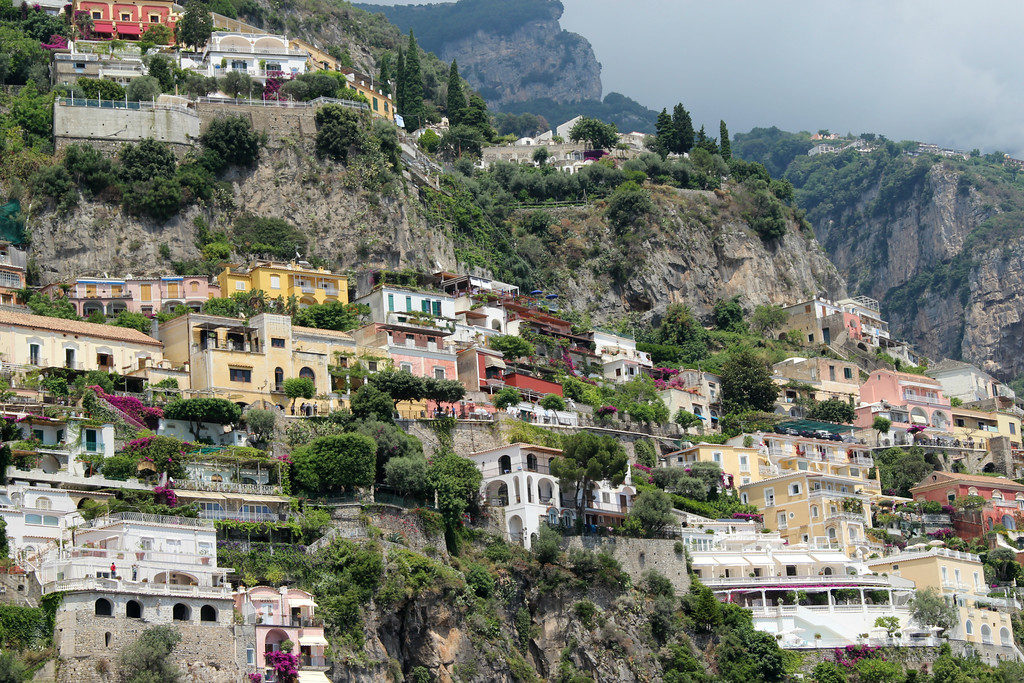

After lunch, we took a motorboat back to Amalfi which provided us with beautiful views of the coast. The entire Amalfi Coast is a UNESCO World Heritage Site. We saw several watchtowers – there are actually 30 along the coast. Many of these were built in the 16th Century every 5,000 to 6,000 feet. Fires would be built on top of the watchtowers to warn residents of pirate attacks. The second picture shows the steps, umbrellas and chairs people are using to enjoy space in the cliffs along the coast – a testament to how we adapt to our environment. The third and fourth pictures highlight the beautiful blue water in the Tyrrhenian Sea. The picture of the fjord with the bridge connecting the two pieces of land is near Furore (also where the old fishing village, mentioned above, is located). The fifth picture is another coastal shot. The long building about halfway up the hill is a burial site. The last picture is in the same area, but when we were a little closer. You can see how the road was built right alongside the cliff. At the far right, you will also see another watchtower.
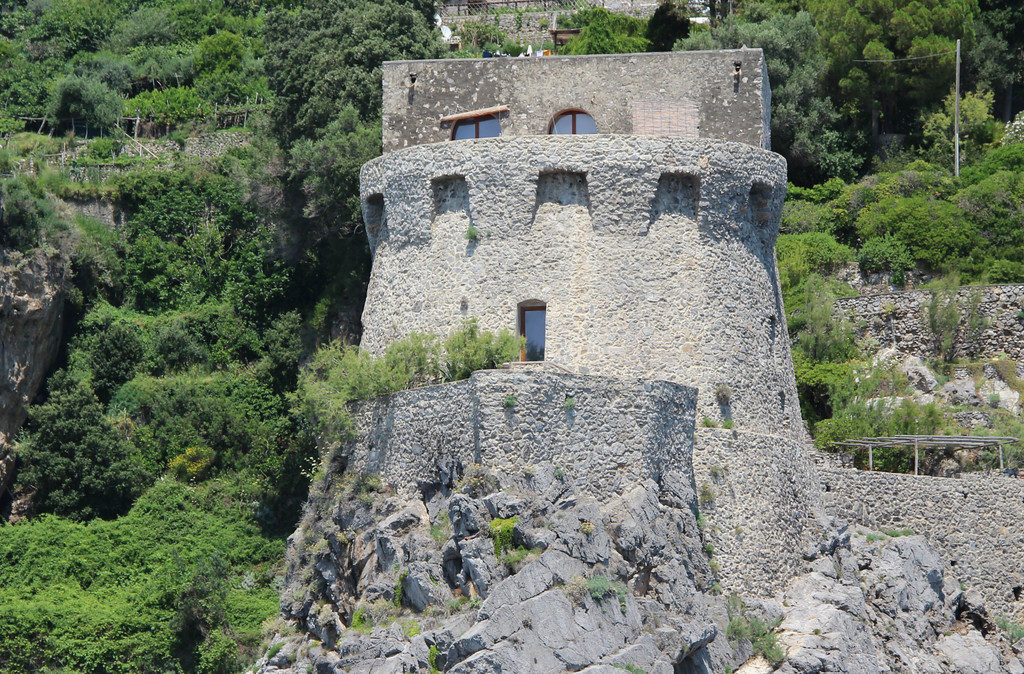
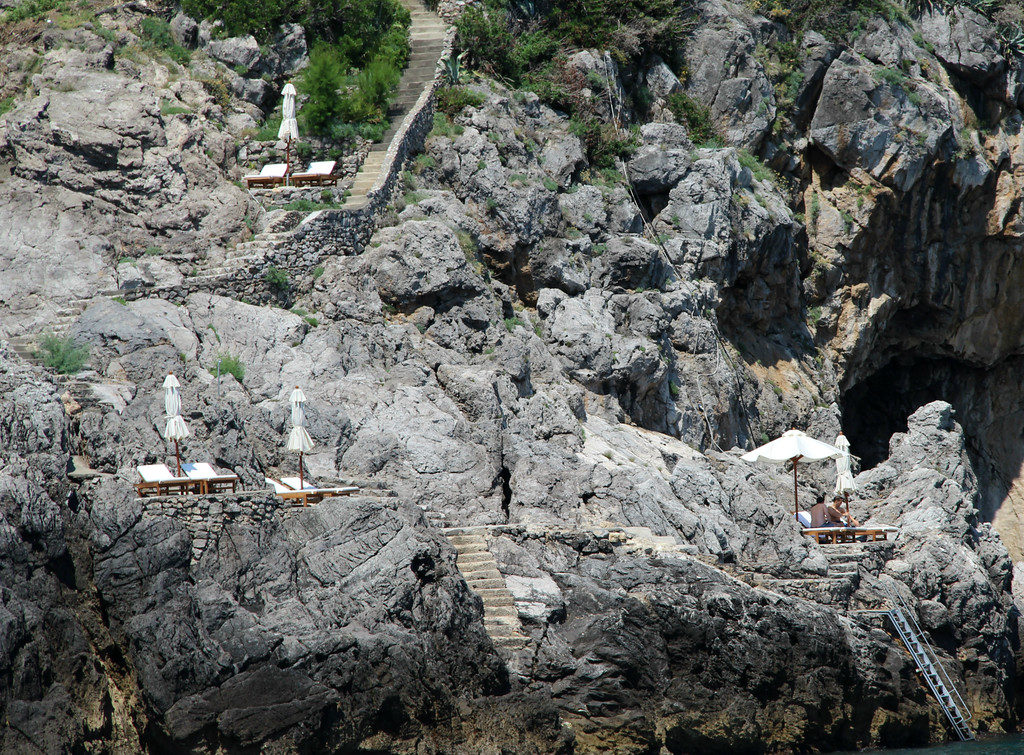
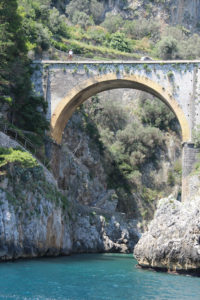
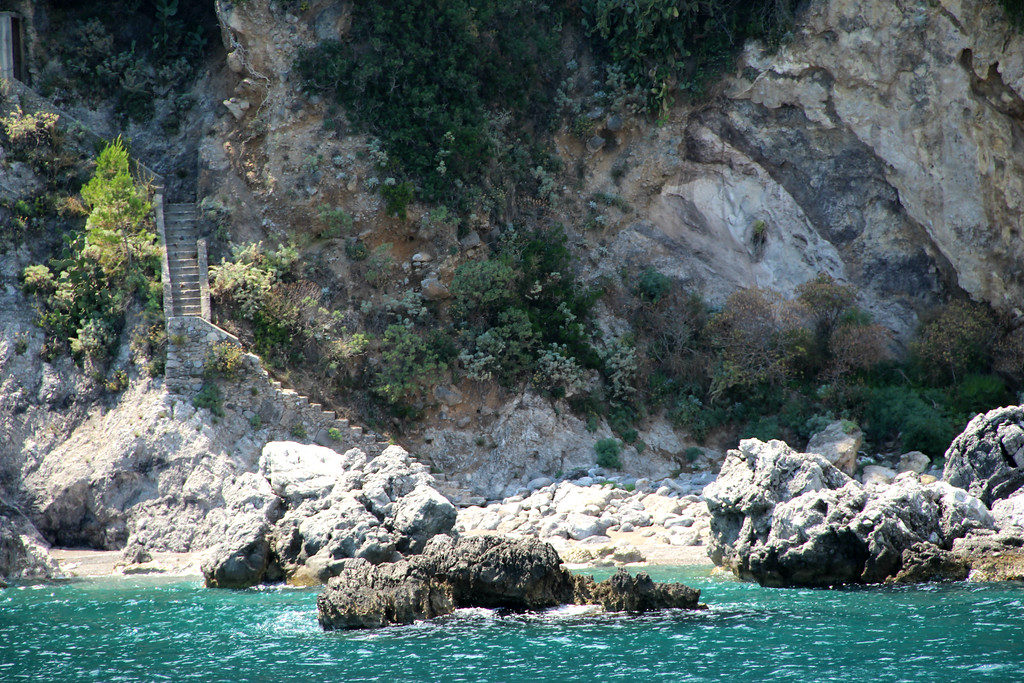
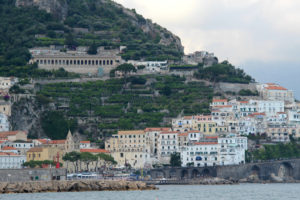

As we approached Amalfi, we saw the bell tower of the Cathedral of St. Andrew, also known as the Amalfi Cathedral. After we came ashore we saw the exterior of the cathedral (pictures below). The Cathedral of St. Andrew dates back to the 1200’s. The facade was rebuilt in 1891 and is made of marble and stone. At the top is a mosaic entitled “The Triumph of Christ.” The bell tower has a central tower and four smaller ones – is was made in an Arab architectural style. The Cathedral of St. Andrew sits next to an older basilica, which dates back to the 9th Century, and today serves as a museum. Relics from St. Andrew were stolen from Constantinople and brought to Amalfi in 1208. They are in the crypt of the cathedral and the Chapel of Relics. We did not go inside the cathedral on our visit to Amalfi during this trip, but did go inside during our Classic Italy tour. If you would like to read that post/see pictures of the interior, you will find them at https://sharingtravelmemories.com/amalfi/ .
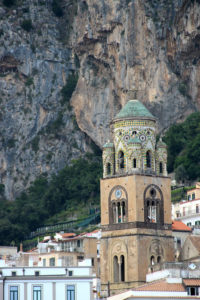

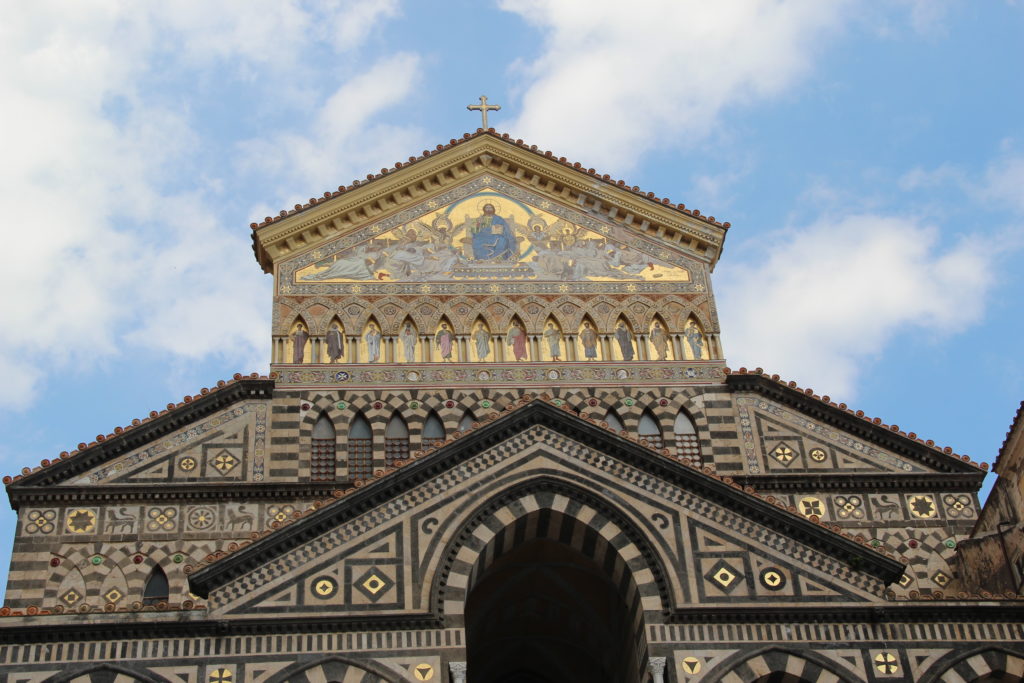

Before returning to the Le Ponant, we spent time shopping. Amalfi is a great place to buy ceramics. Many places will ship them to your home. It certainly lessens what you have to carry and if they are well-packed and insured, you can be pretty confident they will arrive safely. Just make sure you have an itemized receipt and contact information for the shop. Amalfi is also famous for its paper – stationary would be another good choice of something to take home – it is easy to pack and it won’t break!